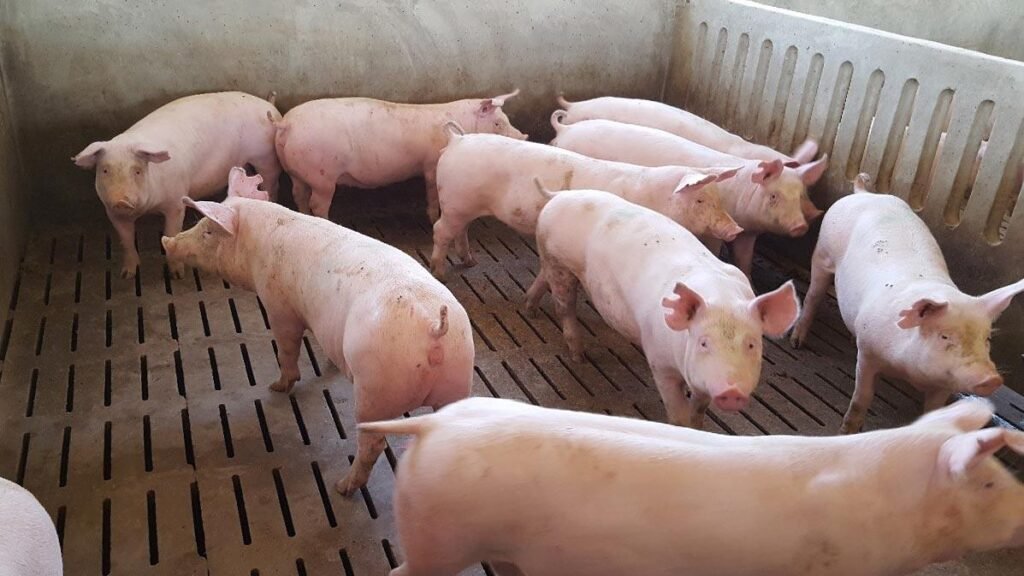In a decisive announcement yesterday, the Department of Agriculture revealed plans to permit gilt imports as part of a comprehensive strategy to rehabilitate the nation’s struggling swine industry. This policy shift arrives after months of deliberation among industry stakeholders and government officials who have witnessed the sector’s swift decline in recent quarters.
The decision to open borders for breeding stock comes at a critical juncture. Our domestic pork production has stumbled significantly since the viral outbreak of 2024, leaving producers scrambling for viable solutions to replenish diminished herds. Many farmers have reluctantly sold off their remaining animals due to skyrocketing feed costs and diminished market access. The timing couldn’t be more appropriate, considering the approaching holiday season when pork consumption traditionally experiences its yearly zenith.
Importing high-quality gilts from certified disease-free zones will provide breeders with genetic material necessary for herd rebuilding. The initial quota allows for approximately 15,000 head to enter through designated quarantine facilities over the next nine months. Security protocols at these entry points have undergone rigorous enhancement to prevent any potential disease transmission that could further devastate the industry. The quarantine facilities themselves have been equipped with next-generation monitoring technology which constantly evaluates the animals for signs of distress.
Industry leaders have expressed cautious enthusiasm toward this plan. “This represents a turning spot for our members who have weathered enormous challenges,” stated Maria Hernandez, chairperson of the National Pork Producers Coalition. “Access to fresh genetics will accelerate recovery efforts substantially.” She further elaborated that producers had nearly reached the breaking point after enduring eighteen months of continuous losses.
The economic implications extend beyond the farm gate. Rural communities where pork production constitutes a backbone industry have suffered disproportionately from the downturn. Employment opportunities dwindled as processing facilities reduced operations or suspended them temporarily. Local businesses that depend on agricultural activity experienced concurrent revenue depression. This import allowance might potentially trigger a ripple effect of economic revitalization in these regions.
Several critics have voiced apprehension regarding biosecurity concerns. Dr. James Wilson from the Agricultural Biosafety Institute noted, “While we understand the financial imperatives, we must balance economic recovery with prudent safeguards against introducing foreign pathogens to our domestic herds.” The Department has assured stakeholders that imported animals will undergo extensive testing and observation periods before distribution to production facilities.
Financial assistance packages will accompany the import program. Small and medium-sized operations can access low-interest loans specifically designed for purchasing imported breeding stock and upgrading biosecurity infrastructure. The maximum loan amount has been set at $250,000 per qualified producer, with repayment terms extending to seven years. These financial instruments should provide much-needed liquidity for operations struggling with cash flow limitations.
Consumer advocates have rallied behind the initiative, recognizing its potential to stabilize domestic pork prices which have climbed approximately 28% since the beginning of the crisis. The American Consumers Association projected that retail prices might begin normalizing by fourth quarter 2026, assuming no additional disruptions occur in the supply chain.
Technical specifications for eligible imports include genetic diversity requirements and health documentation from countries with equivalent or superior veterinary standards. Certain bloodlines have been prioritized based on their adaptability to North American production systems and consumer preferences. The process for determining which offshore suppliers can participate was developed in collaboration by veterinary authorities and industry representatives.
Farmers interested in participating must complete an application process that includes demonstrating adequate quarantine capabilities and a comprehensive biosecurity plan. The department expects the first shipments to arrive by early August, just in time to introduce these animals into breeding programs for spring farrowing.
The pork sector’s contribution to agricultural exports cannot be overstated. Before the crisis, pork products constituted roughly 14% of all agricultural exports, generating over $7 billion annually. Restoring this revenue stream represents an indispensable aspect of the broader economic recovery strategy.
While challenges remain, this bold intervention provides a glimmer of hope for an industry that has traditionally shown remarkable resilience. As one veteran producer put it, “We’ve been down this road before, though perhaps not quite this far down. But pork producers are nothing if not stubborn.”

